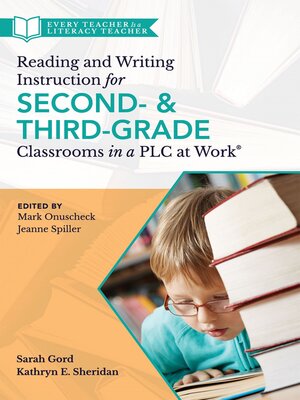Reading and Writing Instruction for Second- and Third-Grade Classrooms in a PLC at Work®
ebook
By Sarah Gord

Sign up to save your library
With an OverDrive account, you can save your favorite libraries for at-a-glance information about availability. Find out more about OverDrive accounts.
Find this title in Libby, the library reading app by OverDrive.



Search for a digital library with this title
Title found at these libraries:
| Library Name | Distance |
|---|---|
| Loading... |
Fully prepare students to begin the pivotal transition from learning to read to reading to learn. Written for individual teachers and collaborative teams, this resource outlines how to craft instruction to ensure every learner masters literacy expectations in second and third grade. Readers will gain a wealth of strategies and practices for designing standards-aligned instruction, developing quality assessment, providing timely interventions, and more.
Use this resource to address specific literacy challenges found within the second- and third-grade band:
Contents:
Introduction: Every Teacher Is a Literacy Teacher
Chapter 1: Establish Clarity About Student Learning Expectations
Chapter 2: Examine Assessment Options for Literacy
Chapter 3: Create a Learning Progression to Guide Instruction and Assessment
Chapter 4: Develop Collective Understanding of Learning Expectations
Chapter 5: Respond to Data to Ensure All Students Learn
Chapter 6: Differentiate Instruction With Gradual Release of Responsibility
Chapter 7: Plan High-Quality Literacy Instruction
Chapter 8: Select Appropriate Instructional Strategies
Chapter 9: Consider Equity in Literacy
Epilogue
Appendix A: List of Figures and Tables
Appendix B: Templates and Tools
Appendix C: Process for Prioritizing Standards
Appendix D: Essential Understandings and Guiding Questions
References and Resources
Index







